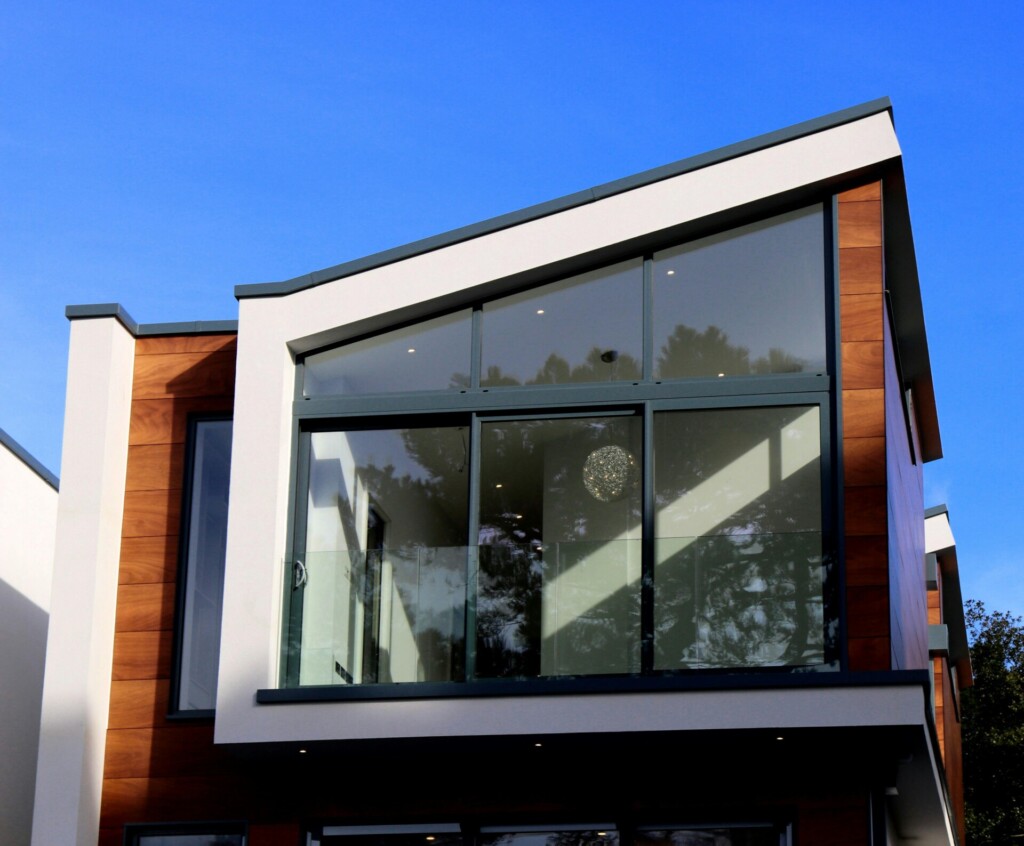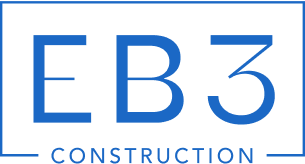A well-maintained office building generates 18% higher tenant retention rates and cuts emergency repair costs by up to 50%. Office building maintenance keeps commercial properties safe, functional, and profitable through systematic upkeep across all building systems.
This ongoing process protects asset value while supporting tenant operations. Property owners, facility managers, maintenance staff, specialized contractors, and regulatory bodies all play roles in maintaining commercial office spaces effectively.
What Systems And Services Belong In An Office Building Maintenance Program?

A comprehensive office building maintenance program organizes critical systems into manageable categories. We structure our maintenance approach around major building systems to ensure complete coverage and operational reliability.
Mechanical Systems
HVAC maintenance forms the backbone of mechanical system care. We handle routine filter changes, coil cleaning, and equipment inspections to maintain air quality and temperature control. Test-adjust-balance (TAB) services ensure proper airflow distribution throughout the building.
Controls service keeps building automation systems running smoothly. We calibrate thermostats, program scheduling systems, and maintain sensors that regulate comfort levels. Energy services include efficiency assessments and system optimization to reduce operating costs.
Plumbing maintenance covers water supply lines, drainage systems, and fixture repairs. We inspect pipes for leaks, maintain water heaters, and service backflow preventers. Regular plumbing checks prevent water damage and ensure reliable service for tenants.
Electrical And Lighting Systems
Electrical services encompass panel inspections, circuit testing, and wiring maintenance. We check connections, test breakers, and verify system capacity to prevent outages and safety hazards. Regular electrical maintenance protects equipment and ensures code compliance.
Lighting systems require ongoing attention to maintain proper illumination levels. We replace bulbs, upgrade fixtures, and service ballasts to keep common areas and workspaces well-lit. Emergency lighting testing ensures safety systems function during power outages.
Life Safety And Security
Fire safety systems demand rigorous maintenance protocols. We test smoke detectors, inspect sprinkler systems, and maintain fire extinguishers according to regulatory requirements. Regular fire alarm testing protects occupants and satisfies insurance obligations.
Doors and locks need regular service to maintain security and accessibility. We adjust door closers, lubricate hardware, and repair access control systems. Locksmith services handle key management and emergency lockouts to keep buildings secure.
Central Plant Operations
Buildings with central plant systems require specialized maintenance expertise. We service boilers, chillers, and cooling towers that provide heating and cooling for larger facilities. Central plant maintenance includes water treatment, equipment calibration, and efficiency monitoring.
Interior And Envelope Care
Painting and drywall maintenance preserves interior appearance and protects surfaces from wear. We handle touch-ups, full repaints, and drywall repairs to maintain professional building aesthetics. Regular interior maintenance supports tenant satisfaction and property value.
Metal, stone, and wood refinishing keeps architectural elements in prime condition. We clean, seal, and restore these surfaces to prevent deterioration. Window washing maintains clear views and professional appearance both inside and outside the building.
Pressure washing removes dirt and stains from exterior surfaces. We clean sidewalks, building facades, and parking areas to maintain curb appeal. Floor maintenance includes cleaning, waxing, and repairs to keep interior surfaces safe and attractive.
Trash removal and construction clean-up services maintain sanitary conditions. We coordinate waste management schedules and handle debris removal from renovation projects. Proper waste management prevents pest problems and maintains building cleanliness.
Operations And Site Services
General maintenance and repair covers the daily issues that arise in building operations. We handle minor repairs, equipment adjustments, and tenant service requests. This broad category ensures responsive service for unexpected maintenance needs.
Landscaping and grounds maintenance enhance property appearance and prevent damage from overgrowth. We manage lawn care, tree trimming, and irrigation systems. Proper grounds maintenance protects building foundations and maintains professional curb appeal.
Waste and recycling programs require coordination and monitoring. We work with service providers to ensure proper collection schedules and compliance with local regulations. Effective waste management keeps properties clean and environmentally responsible.
Elevator and escalator servicing requires licensed professionals and regular inspections. We coordinate with certified technicians to maintain vertical transportation systems. Proper elevator maintenance prevents breakdowns and ensures passenger safety.
How Do You Build A Preventive Maintenance Schedule That Works?
Creating an effective maintenance schedule begins with thorough property assessment. We conduct comprehensive inspections to identify every critical asset and potential risk point across the building. This systematic review covers mechanical systems, electrical components, life safety equipment, and building envelope elements.
Asset inventory drives schedule development. We catalog equipment by location, system type, and criticality level. Each component receives documentation of manufacturer specifications, warranty periods, and service requirements. This detailed mapping ensures nothing falls through the cracks during routine maintenance cycles.
Establishing Maintenance Frequencies
Daily tasks focus on basic operational needs. Janitorial services maintain cleanliness and address immediate safety concerns. Security checks verify access controls and lighting systems function properly. These quick inspections catch obvious problems before they escalate.
Weekly maintenance expands to include equipment monitoring and minor adjustments. We examine HVAC air filters, test emergency lighting, and inspect common areas for wear patterns. Regular walkthroughs help identify developing issues that need attention.
Monthly and quarterly intervals handle more intensive preventive work. HVAC systems receive filter changes, belt inspections, and performance checks. Plumbing systems undergo pressure tests and drain cleaning. Fire safety equipment gets monthly testing with quarterly professional inspections. These scheduled maintenance activities prevent major breakdowns.
Seasonal maintenance addresses weather-related needs. Spring preparation includes roof inspections and HVAC system startup procedures. Summer focuses on cooling system optimization and exterior maintenance. Fall brings weatherproofing tasks and heating system preparation. Winter emphasizes snow removal planning and backup system testing.
Following Manufacturer Guidelines
Equipment manufacturers provide specific maintenance requirements that we integrate into our schedules. These recommendations specify service intervals, required procedures, and critical inspection points. Adhering to manufacturer guidance protects warranties and ensures optimal performance.
We review technical documentation for every major system component. Service manuals detail lubrication requirements, filter specifications, and adjustment procedures. Following these guidelines prevents premature equipment failure and maintains energy efficiency standards.
Manufacturer recommendations also specify qualified technician requirements for certain tasks. We coordinate with certified contractors when specialized knowledge or tools are necessary. This approach ensures complex systems receive proper care while maintaining safety standards.
Documentation And Work Order Management
Clear documentation tracks all maintenance activities from planning through completion. We create detailed work orders that specify required tasks, safety protocols, and completion criteria. Each order includes asset information, required materials, and estimated labor time.
Work orders guide technicians through proper procedures while capturing completion data. Digital systems allow real-time updates, photo documentation, and immediate issue reporting. This systematic approach ensures consistent service quality and creates valuable maintenance histories.
We document all findings, actions taken, and follow-up requirements. Detailed records support warranty claims, regulatory compliance, and future planning decisions. Regular review of these records helps identify patterns and optimize maintenance strategies.
Safety considerations take priority in every maintenance activity. We establish clear protocols for hazardous work, require appropriate personal protective equipment, and verify proper training before task assignment. Risk assessment guides scheduling decisions to minimize tenant disruption while maintaining safety standards.
After safety, we prioritize tasks based on their impact on tenant comfort and building operations. Critical systems receive immediate attention while less urgent items are scheduled during appropriate maintenance windows. Energy-saving opportunities and long-term return on investment guide resource allocation decisions.
Performance tracking measures schedule effectiveness through completion rates, response times, and issue resolution metrics. We monitor equipment downtime, maintenance costs, and tenant satisfaction to identify improvement opportunities. Regular schedule reviews incorporate lessons learned and adjust frequencies based on actual performance data.
How Can Technology And Data Improve Office Building Maintenance?

Technology transforms how we approach maintenance decisions and equipment reliability. Building Management Systems centralize control of HVAC, lighting, security, and fire systems into unified platforms. These integrated systems reduce response times when issues arise and provide comprehensive oversight of building operations.
IoT sensors create the foundation for proactive maintenance strategies. Occupancy sensors track usage patterns to optimize energy consumption in vacant areas. Temperature and humidity monitors identify environmental conditions before they affect tenant comfort. Air quality sensors detect changes that could impact indoor environments, while leak detection systems prevent water damage by alerting teams to problems immediately.
Mobile Technology Accelerates Field Response
Mobile maintenance apps streamline communication between maintenance staff and facility managers. Technicians capture photos, document conditions, and update work order statuses directly from the field. This immediate data sharing eliminates delays between problem identification and resolution.
Cloud property management platforms connect distributed teams and centralize maintenance data. Remote access to building systems and maintenance records enables faster decision-making and better resource allocation across multiple properties.
CMMS Organizes Maintenance Operations
Computerized Maintenance Management Systems structure work orders, track equipment histories, and manage inventory levels. We use CMMS platforms to schedule preventive maintenance tasks, monitor completion rates, and analyze maintenance costs across building systems. Advanced CMMS software integrates with IoT sensors and building management systems to automatically trigger maintenance requests when equipment parameters exceed normal ranges.
Equipment performance data reveals patterns that manual inspections often miss. Historical maintenance records help identify recurring issues and guide procurement decisions for replacement components.
Building Analytics Drive Performance Improvements
Building analytics platforms process sensor data to identify energy optimization opportunities and equipment anomalies. Predictive maintenance algorithms analyze equipment performance trends to schedule repairs before failures occur. This approach reduces downtime and extends equipment life by addressing issues during planned maintenance windows rather than emergency responses.
Data-driven maintenance decisions improve budget accuracy and resource planning. Analytics identify which systems require immediate attention and which can wait for scheduled maintenance cycles. Energy consumption patterns reveal opportunities to reduce operating costs through system adjustments or equipment upgrades.
System integration connects building management platforms with CMMS and mobile applications to create comprehensive maintenance workflows. Staff training ensures teams understand how to interpret data insights and respond appropriately to automated alerts. Regular data reviews help refine maintenance strategies and improve overall building performance.
What Compliance, Safety, And Cost Factors Should Teams Plan For?
Safety regulations form the foundation of effective office building maintenance. We maintain fire protection systems according to NFPA standards, ensuring sprinkler systems, alarms, and detection equipment receive quarterly inspections and annual testing. Emergency evacuation procedures require regular drills and clear signage throughout the property. These protocols protect occupants and reduce liability exposure for property owners.
Building codes govern structural integrity, electrical systems, and mechanical installations. We coordinate with local authorities to ensure ongoing compliance with updated regulations. Accessibility requirements under the Americans with Disabilities Act demand regular assessments of ramps, elevators, and bathroom facilities. Environmental regulations cover everything from proper waste disposal to energy efficiency standards that affect HVAC operations.
Insurance And Safety Protocols
Insurance coverage for on-site maintenance work requires careful verification of contractor policies and safety protocols. We document all safety procedures and confirm that maintenance staff follow OSHA guidelines for equipment operation and hazardous material handling. Proper safety training reduces workers’ compensation claims and maintains coverage eligibility.
Safety protocols extend beyond regulatory compliance to include equipment lockout procedures, confined space protocols, and personal protective equipment requirements. These measures protect maintenance teams while ensuring uninterrupted building operations. Regular safety audits help identify potential hazards before they become costly incidents.
Maintenance Cost Planning
Office building maintenance typically costs $2.15 per square foot annually, with commercial properties generally falling within the $2.00 to $2.50 range. These benchmarks help establish realistic budgets, though actual costs vary significantly based on building age, location, and maintenance strategy. Older properties often require higher investment due to aging systems and infrastructure challenges.
Regional factors influence maintenance costs through labor rates, climate considerations, and local code requirements. Buildings in harsh weather environments need more frequent exterior maintenance and weatherproofing. Urban properties may face higher labor costs but benefit from contractor availability and specialized service providers.
Smart building systems require upfront investment but deliver long-term savings through energy optimization and predictive maintenance capabilities. These technologies can reduce operating expenses by 15-20% over time while extending equipment lifespan. The key lies in balancing initial costs with projected savings to determine optimal implementation timing.
Documentation And Compliance Tracking
Comprehensive record-keeping supports audits and regulatory inspections while providing valuable data for budget planning. We maintain detailed logs of all maintenance activities, including work orders, materials used, and completion times. This documentation helps track compliance with manufacturer recommendations and warranty requirements.
Regular inspections by qualified professionals ensure systems meet current codes and identify potential issues before they escalate. Fire safety systems, elevators, and HVAC equipment require annual certifications that must be documented and readily available. These records also support insurance claims and help demonstrate due diligence in property management.
Energy savings documentation helps justify investments in efficient systems and supports sustainability reporting requirements. Tracking operating expenses against benchmarks reveals opportunities for cost reduction and system optimization. This data-driven approach enables more accurate budgeting and strategic planning for major equipment replacements.
Conclusion And Next Steps

We approach office building maintenance as a strategic investment that requires disciplined execution and smart resource allocation. A well-crafted office building maintenance plan forms the foundation of operational efficiency and tenant satisfaction. Documentation creates accountability and enables continuous improvement across all building systems.
Map your building systems comprehensively before defining maintenance tasks. Train your teams on protocols and priorities. Track completion rates and response times to identify improvement opportunities. Analytics and automation enhance efficiency where they align with your operational needs. Regular compliance reviews and budget assessments protect both assets and occupants while supporting long-term capital planning.
These coordinated steps reduce operational risk and maintain tenant comfort consistently. Smart maintenance strategies extend equipment lifecycles and optimize operating expenses. The result is a building that performs reliably while supporting tenant productivity and satisfaction.
Ready to implement a comprehensive maintenance strategy for your office building? Contact EB3 Construction to develop a maintenance plan that protects your investment and enhances tenant experience.




